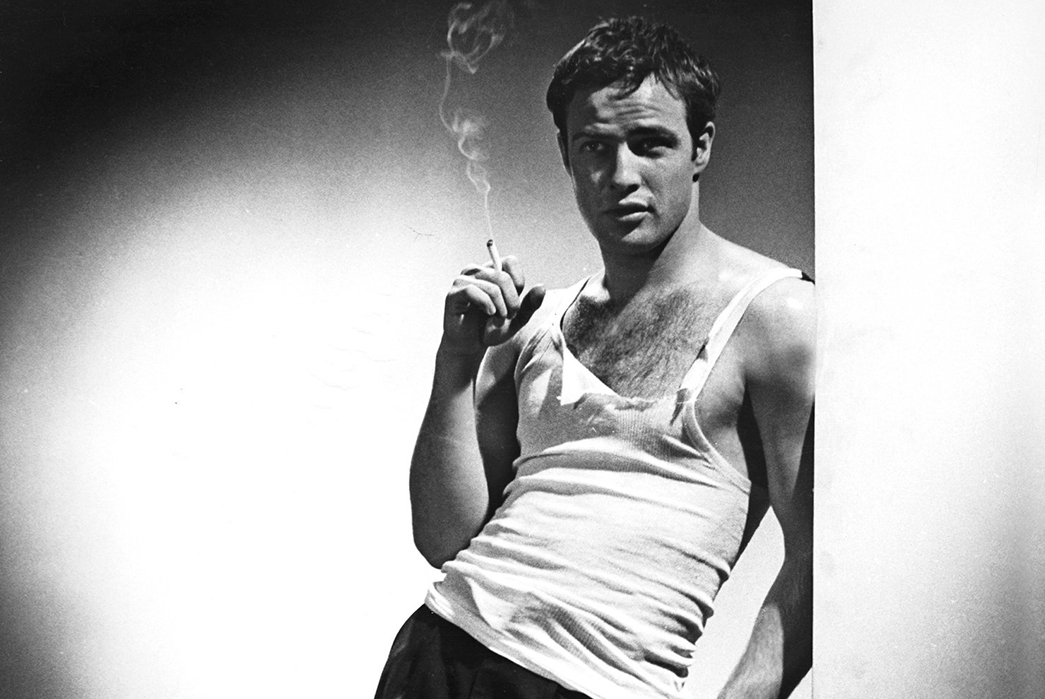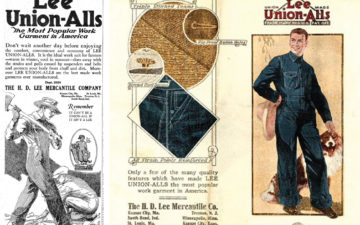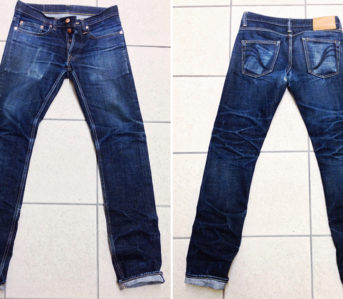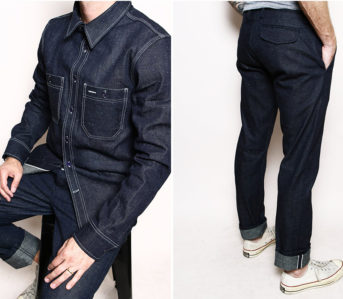Ah, the tank top. From pretty much the garment’s inception (or at least a little bit after), these sleeveless undershirts have been tied to all kinds of unpleasant, overly macho, manly men. It’s certainly a shirt that people can pull off, but a tasteful tank top can be a challenge to execute, in no small part because of the many jerks who’ve worn them throughout the years, giving the garment a bad rap. From navigating the waters of Olympic swimming pools to lighting up the silver screen to its maligned associations with bro culture, the garment has seen its fair share of cultural shifts turning points.
Let’s dive in, shall we?
In “The Tank”
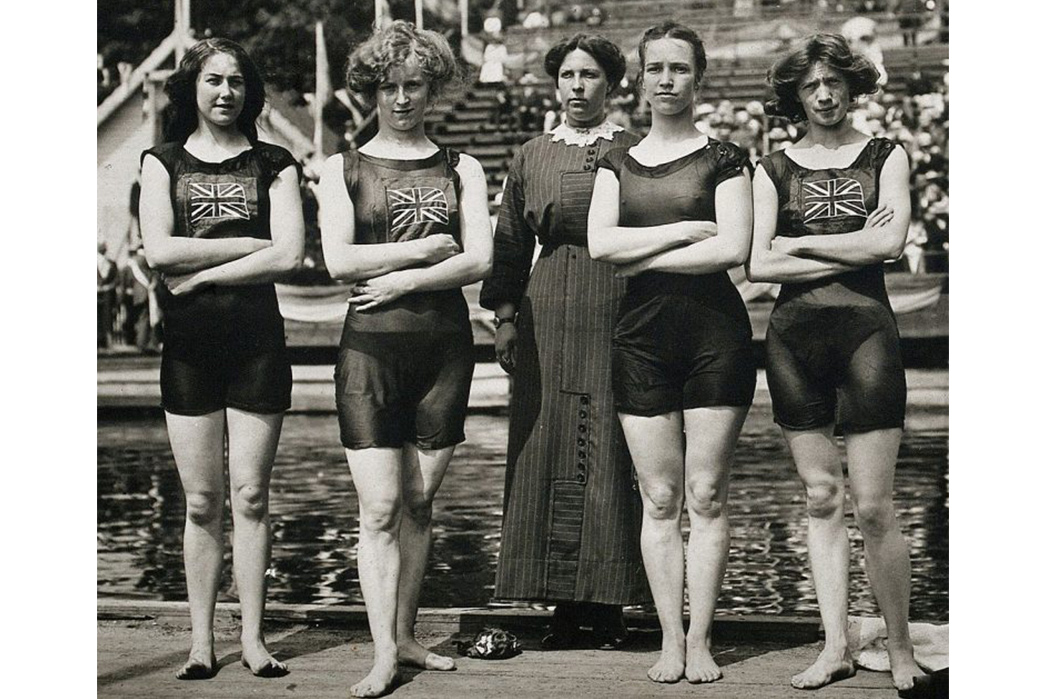
The British Women’s Swim Team at the 1912 Olympics. Image via Wikipedia.
One of the earliest and most scandalous editions of the tank top wasn’t even worn by men. The garment that would eventually evolve into the “Suns Out, Guns Out” top we know today started as the upper half of a swimsuit—and a women’s swimsuit, no less! The above members of the women’s Olympic swim team caused a stir in 1912 when they brazenly bared their arms for the competition.
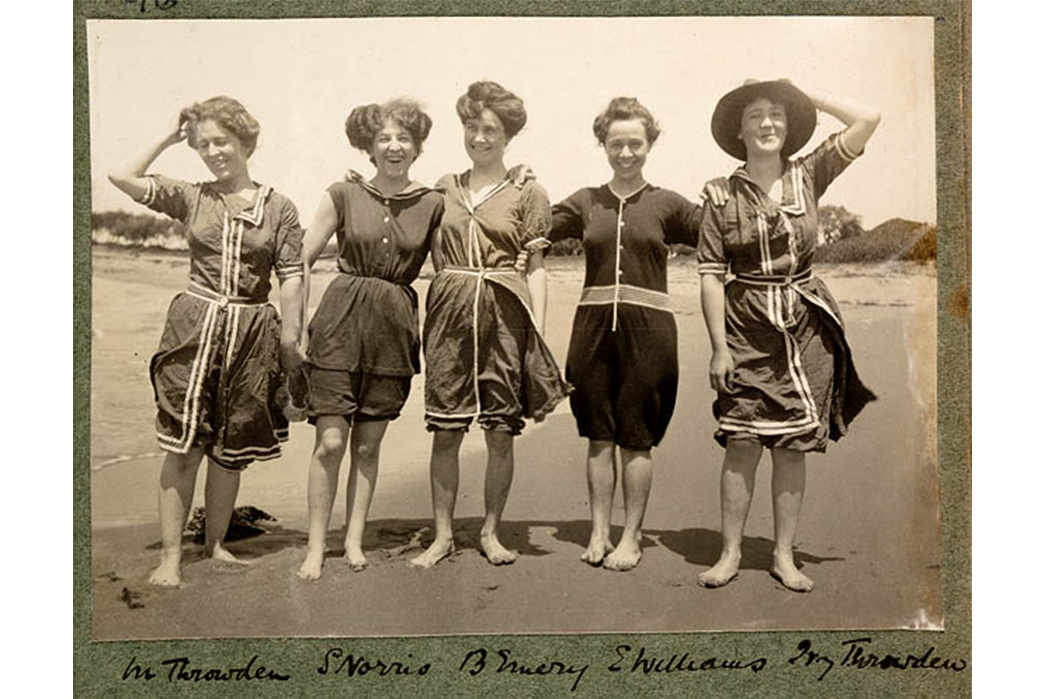
Turn-of-the-century women’s swimwear. Image via Bustle.
Previously, women’s swimsuits had looked like those shown above, specifically designed for “modesty.” Upper arms were covered and peculiar extra layers of fabric around the waist prevented them from fitting too close to the body, even when wet. Even in the restrictive climate of the early 1900s, it made sense to pare back these large, billowing bathing costumes for elite athletes. Perhaps the powers-that-be could justify a little extra skin showing if it meant gold medals!
Though men of the same era were already wearing sleeveless bathing tops, it was the women’s team that made the greatest impact. By sheer force of scandal, the tank top burst onto the scene. And as pools were often called “tanks” these bold Olympians cemented the connection between the classic exposed shoulder and the “tank.” Hence, tank tops.
Machismo
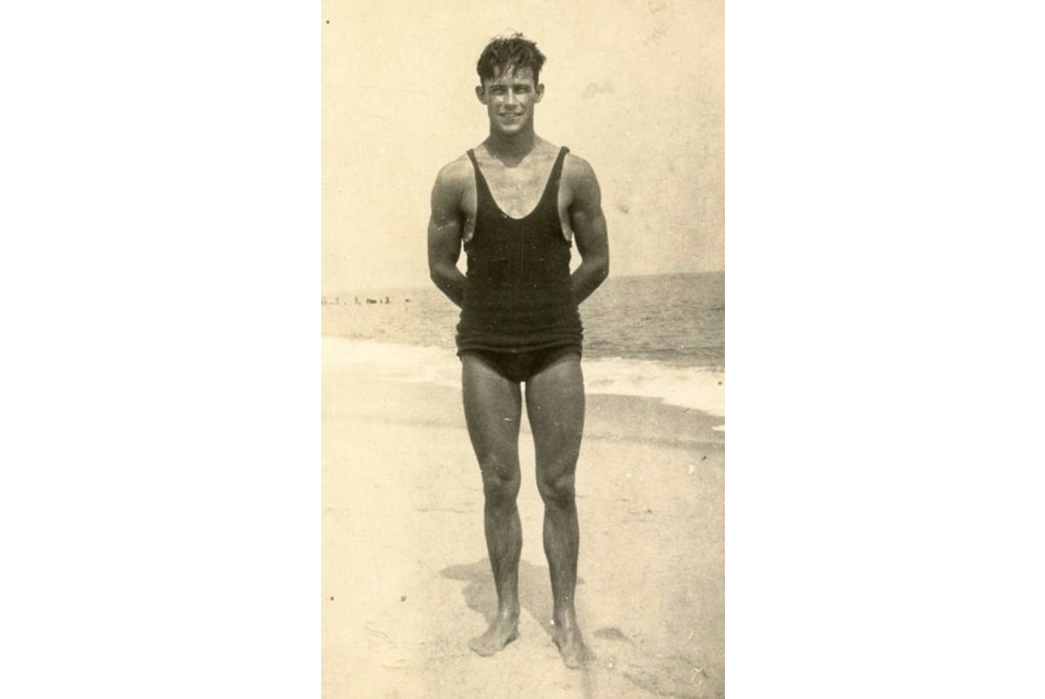
Man in bathing suit, c. 1910. Image via Vintage Everyday.
Somehow, in our collective consciousness, the tank top became associated not with female sports legends, but with overly macho men. At the same time the British swimmers were showing off their upper arms, it wasn’t at all uncommon for men to wear a similar bathing ensemble to the beach. But it was off the beach and in the hot city streets that the tank top gained its modern connotation, usually at the expense of newly-arrived immigrants.
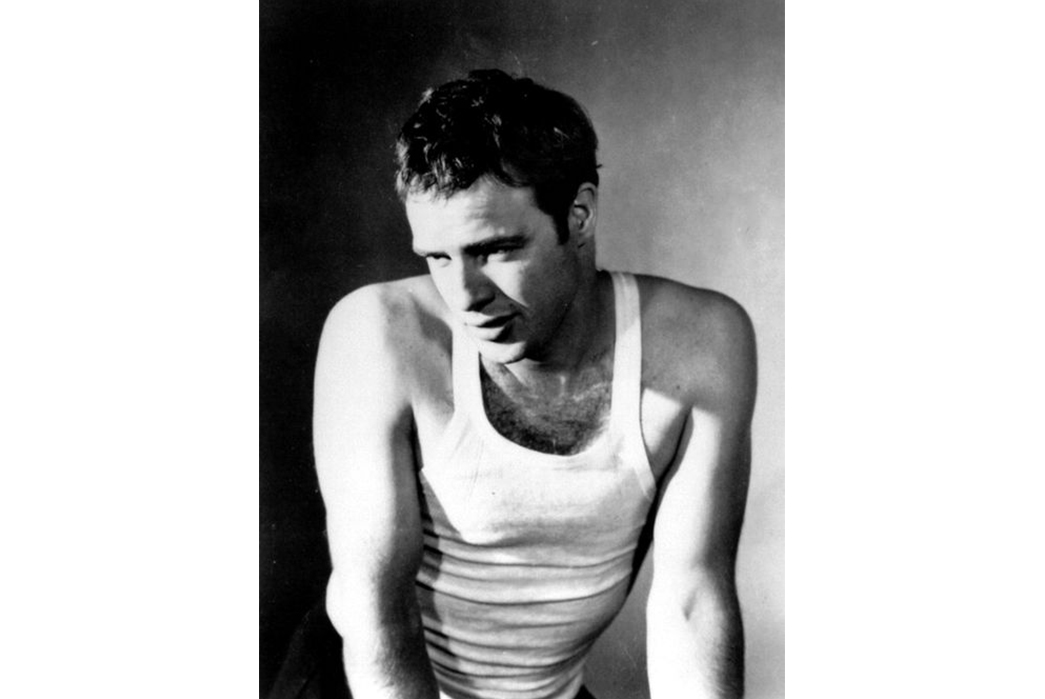
Marlon Brando in “A Streetcar Named Desire”. Image via Pinterest
The historical thread gets twisted around this time. Some sources insist that the tradition of wearing a tank top as anything more than an undergarment can be traced to Italian immigrants. These same sources allege that Italian men had some kind of affinity for wearing tank tops outside of their nicer shirts and brought this aesthetic choice with them to the U.S., especially New York, where they were able to stay cool in the sweltering summer humidity. But to me, this seems like a way of perpetuating age-old stereotypes about immigrant men. This stereotyping seems especially evident when you consider the wholly inappropriate other name for tank tops, “wife beaters.”
Consider the fact that some of the greatest portrayals of tank tops in film are about immigrant and working-class communities (often starring Marlon Brando) like On The Waterfront and A Streetcar Named Desire, then take this a step further and remember that Tennessee Williams wrote Streetcar and most of his other works parodying traditional heterosexual relationships. Usually by adding a boorish, monstrous husband to the mix. There is some strain of elitist, anti-immigrant sentiment in many of the tank top histories that (however unintentionally) conflates the idea of domestic violence and poverty/chasing the American Dream, etc.
While it could very well be that somehow Italian men originated the look, it seems far more likely that wearing a tank top outside of one’s collared shirt was more a survival and comfort mechanism, especially for those in humid, unpleasant climates. Other historians try to tie the phrase “wife beater” to a Medieval equivalent, “waif beater,” which apparently connoted a knight who has lost his armor in combat and continued to fight in his sleeveless chainmail. The first uses of the current phrase “wife beater” can be found in regards to domestic violence cases in the late 1800s; the linguistic bridge between these two ideas is a tenuous one.
To try and pinpoint a specific nationality or region that originated the tank top seems like missing the point. To wear a tank top was a smart way to keep from sweating through your nicer shirts in the summer, which meant that mostly lower class folks (who didn’t have huge wardrobes) were more likely to follow the common-sense, functional “trend.”
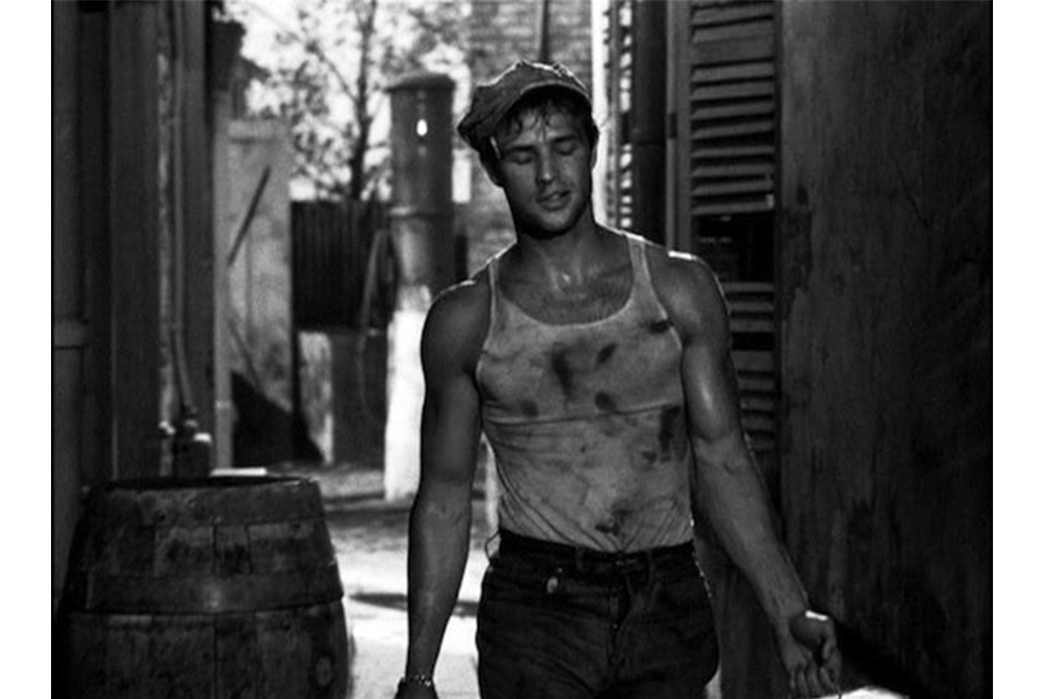
Brando again. This time in On The Waterfront. Image via Blue 17
As with many tentpoles of men’s style, there is a kind of chicken-and-egg argument. Does the garment’s reputation come from movies? Were costume designers in important films choosing the pieces because people were actually committing acts of domestic violence in tank tops? Who can say? But what is more than clear is that DAMN, BRANDO LOOKS GOOD IN ‘EM.
Modern Era

Oh boy. Image via eBay.
The mystery of why the tank top is now so reviled is a complex one. And as with most things, when you look closer, there are sinister forces at work. Though the early conflation of sleeveless shirts and heinous acts of domestic violence explain why folks looked down on them in the early to mid-1900s, it’s a little easier to understand why they’re mocked today.

A now-banned Cal Poly frat. Image via KCBX.
Nowadays, one associates the tank top with the one of the vilest segments of society: the frat boy. In bastions of white privilege, the tank top arrives again and again as the harbinger of misogyny and (oftentimes) bad style. If we can forgive the early iterations of the tank top for their bad rap, it’s harder to justify the modern version’s sins.
Tank Tops
Comme Des Garçons x Sunspel
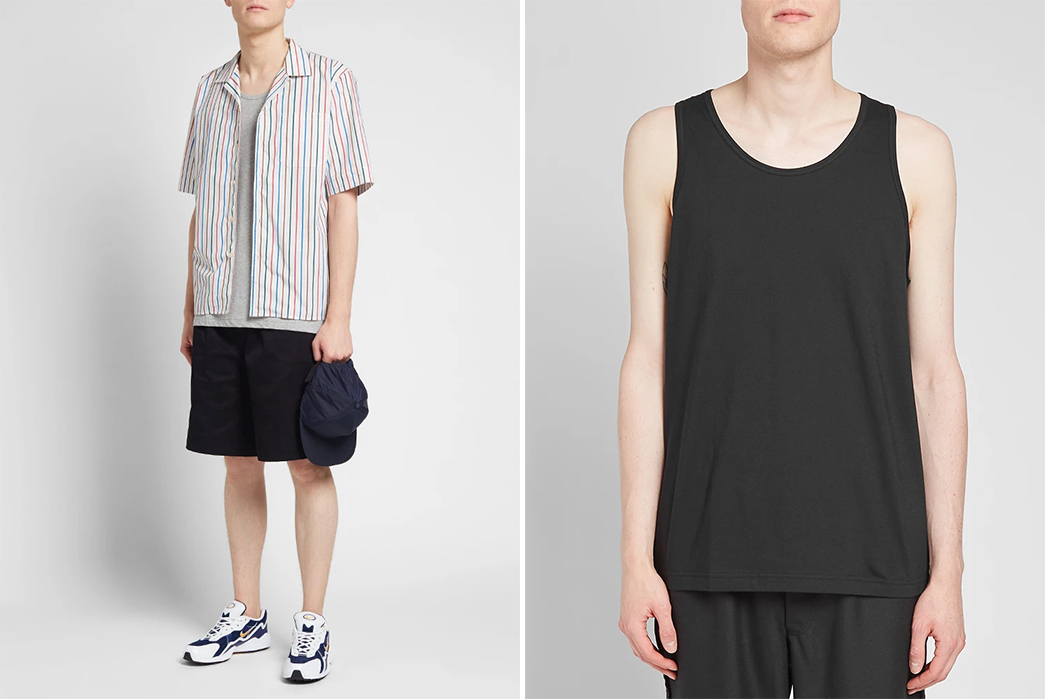
So tasteful! Image via End.
Comme Des Garcons does great basics and their collab with Sunspel makes for a pleasantly-understated tank top option. All-cotton and featuring a bound collar, this is a great example of how to style a tank! Tastefully concealed under a nicer shirt, you can wear it out for a night dancing and wait ’til everyone is sufficiently plastered and sweaty and then whip off your collared shirt and there you are! Bare shoulders and all!
Available from $39 at End Clothing.
Hemen
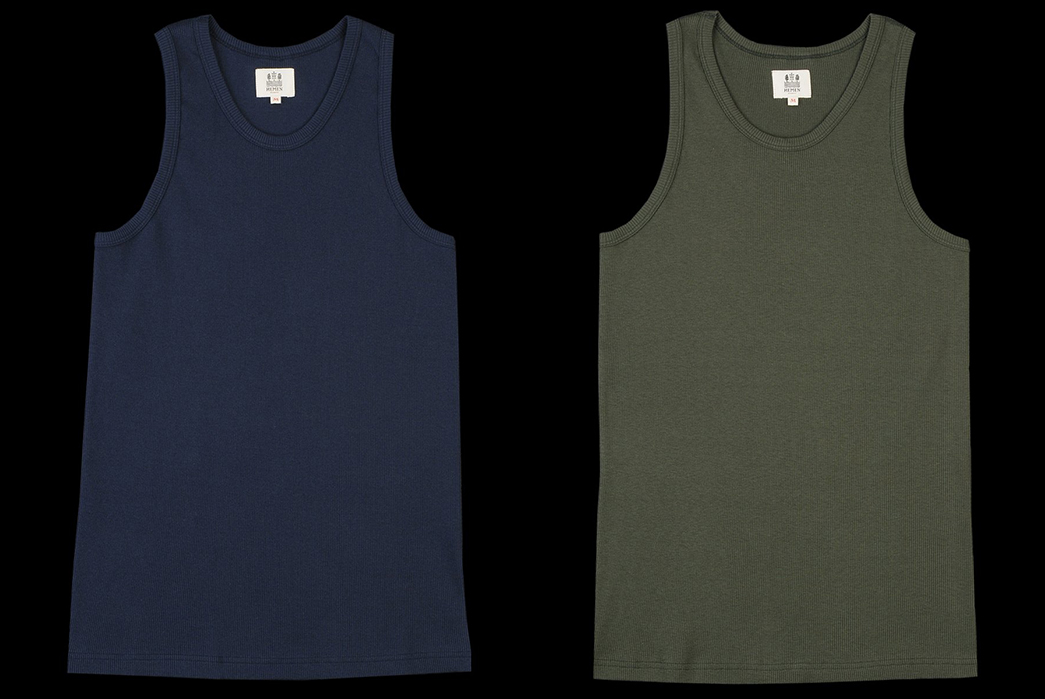
Hemen does another great tank top interpretation. These 100% organic cotton goodies come in classic colors and are another great example of a tasteful tank. Plain and simple and without any annoying phrases emblazoned on the front, this is another great one to throw on under a nice rayon shirt that you don’t want to get too icky in the summer heat.
Available for $45 at Mr Porter

